Space Force program comes to the Academy for Academic Excellence in Apple Valley
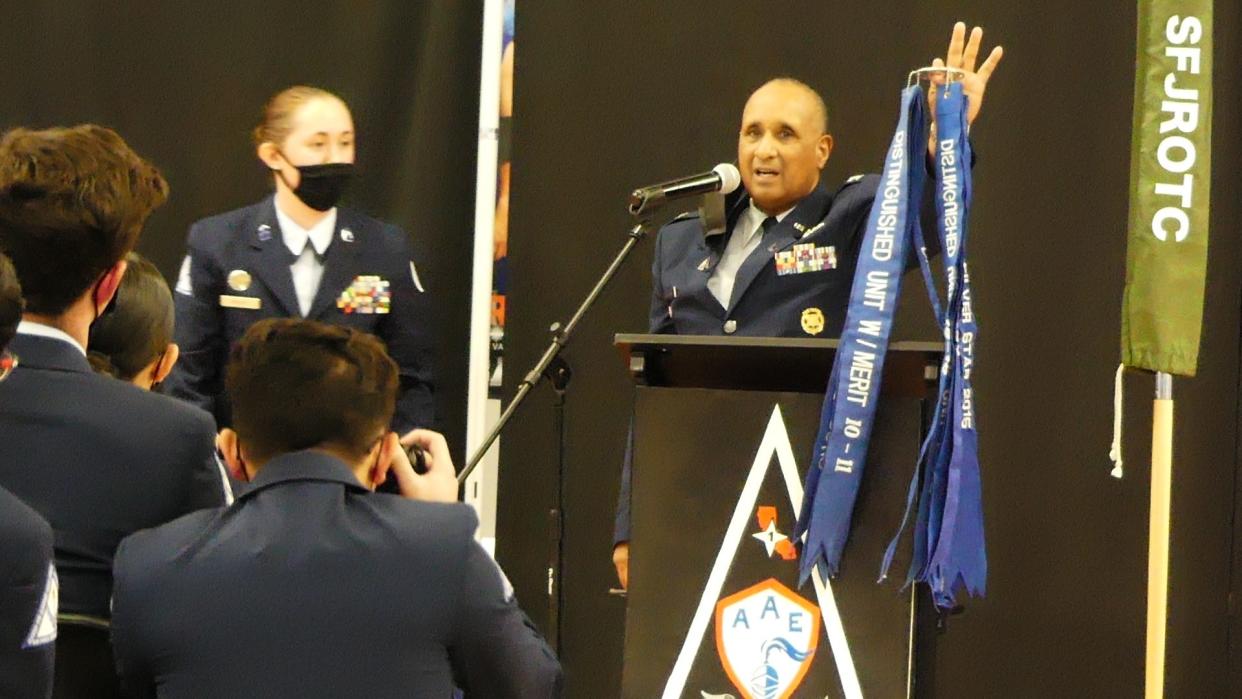
Academy for Academic Excellence students were part of history when the Apple Valley-based school became one of the first in the nation to join the Space Force Junior ROTC Program.
Student Carlos Andrade Jr. was one of nearly 140 JROTC Cadets who participated in Tuesday’s “Activation Ceremony” as AAE converted its Air Force JROTC unit into one of the nation’s inaugural Space Force JROTC units.
“Space Force will allow us to explore a new frontier and will open opportunities in the space industry,” said Andrade, 16, who’s been part of the JROTC for three years.
Because of AAE’s longtime partnership with NASA/Jet Propulsion Laboratory — through the Goldstone Apple Valley Radio Telescope program — Andrade has been given the opportunity to command a “space-related team” with the SFJROTC.
The Goldstone radio telescopes allow Andrade, his team and other AAE students to conduct astronomical research, such as mapping quasars, black holes and celestial bodies, including comets and asteroids.
Tuesday’s ceremony opened the door for AAE to officially become a pioneer in the U.S. Space Force program, the first unit in California, and the first charter school in the world to introduce the program, school officials said.
The ceremony was attended by students, AAE staff, members of the San Bernardino County Sheriff’s Department and officials from the Town of Apple Valley.
Other attendees included representatives from county and state officials, and AF Colonel John Grimm and Col. Heather Bogstie from Space Force’s Space and Missile Systems Center.
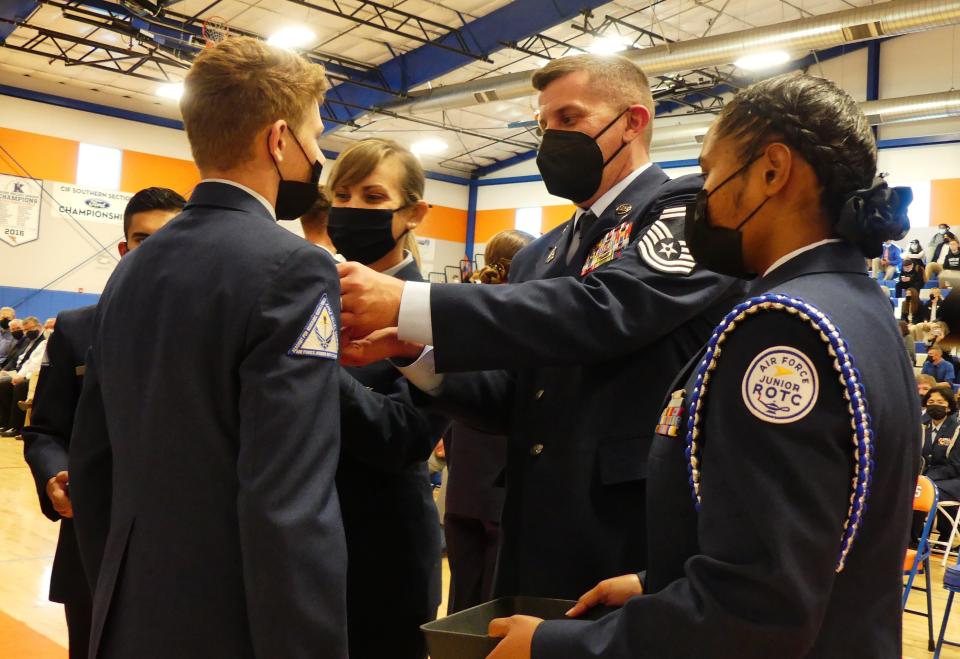
AAE’s Senior Space Science Instructor Ret. Colonel George Armstrong III told the Daily Press that his school’s JROTC unit and nine others were officially activated as SFJROTC units in May 2021.
The AAE unit is currently run by Armstrong and also Space Science Instructor Ret. Master Sergeant Harold Padua.
To mark the beginning of the new era, Tuesday’s ceremony included the deactivation of AAE’s Air Force JROTC unit and the raising of the Space Force flag or guidon.
During the ceremony, 10 senior cadets received a gold and blue U.S. Space Force lapel pin, which some say resembles the Starfleet Command insignia from the Star Trek movie/TV franchise.
Military officials say the Space Force logo was based on the Air Force design and represents the sixth branch of the U.S. military.
In Dec. 2019, the Space Force Military Unit was formed to conduct global space operations to enhance the way the U.S. joint and coalition forces fight, while also offering decision-makers military options to achieve national objectives, according to the government website.
Air Force Junior ROTC units around the country were evaluated for schools worthy of the transition into the Space Force ROTC unit, the school said.
“I want to see opportunities for the cadets now and after they leave high school. I want them to go out and be successful in life and this will help them to do that,” Armstrong said. “They get to see all of this transition and where they can go with it.”
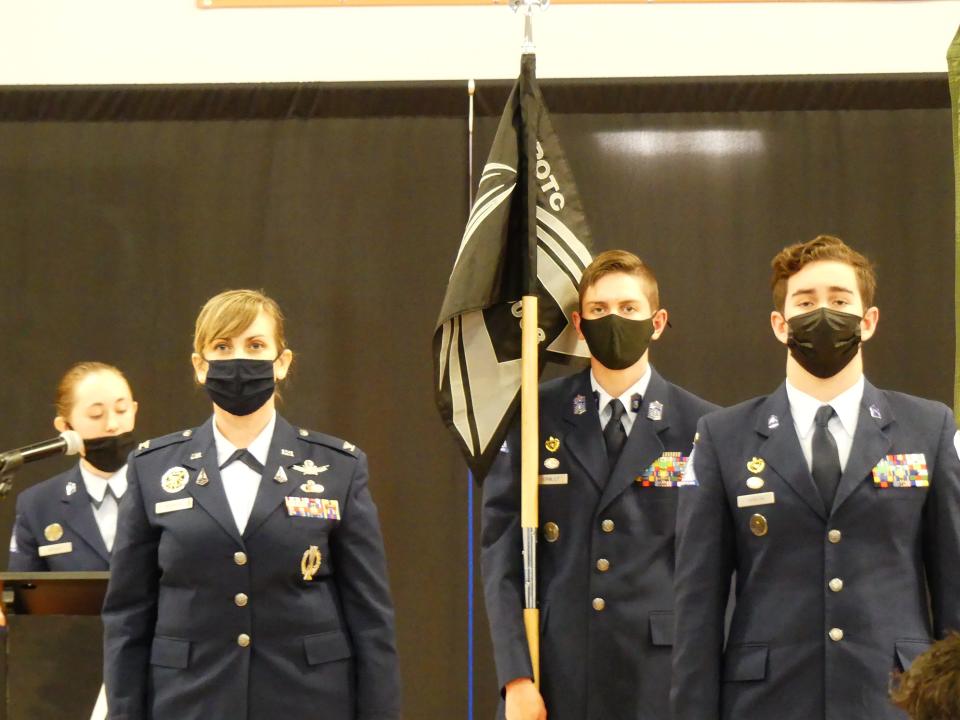
The curriculum
The Space Force JROTC curriculum is not yet defined, according to Anthony “Todd” Taylor, chief of the program development division at Headquarters Air Force ROTC.
“We anticipate a more defined space focus within the curriculum,” Taylor told Air Force Magazine. “AFJROTC’s curriculum is approximately 40% leadership, 40% aerospace science, and 20% fitness and wellness.”
Taylor said space will take lead in the aerospace science area, such as the AFJROTC’s existing space textbook, which covers the space environment, space exploration, manned and unmanned spaceflight, space technology, as well as commercial use of space.
Armstrong said he, Padua and the SFROTC cadets will have the opportunity to create the curriculum, and the cadets will get the chance to “make some history and create a legacy.”
As of June 2021, AAE passed the evaluation and was selected to transition from Air Force to Space Force. AAE was selected due to the Lewis Center’s longtime partnership with NASA/JPL through the Goldstone Apple Valley Radio Telescope (GAVRT) program.
The program allows students the opportunity to access two Deep Space Network telescopes at the Goldstone Observatory in the Mojave Desert northeast of Barstow.
“I think this is a very unique opportunity that not a lot of units have, and I am grateful that we were given the chance to transition,” said Cadet Delta Commander of Space Force Junior ROTC Antoinette Sardillo. “I feel like the future holds a lot of opportunities and this transition will open pathways that the cadets here will get to experience and take advantage of.”
AAE Principal Valli Andreasen reiterated her confidence in her students and program by saying, “We are ready to be a model for this program leading the way through our students and our school. We have tremendous school engagement and spirit here. Not to mention, our long-standing partnership with NASA/JPL, which helps build on our GAVRT program. It really is a perfect fit as we continue to build on our achievements in STEM and Space Science.”
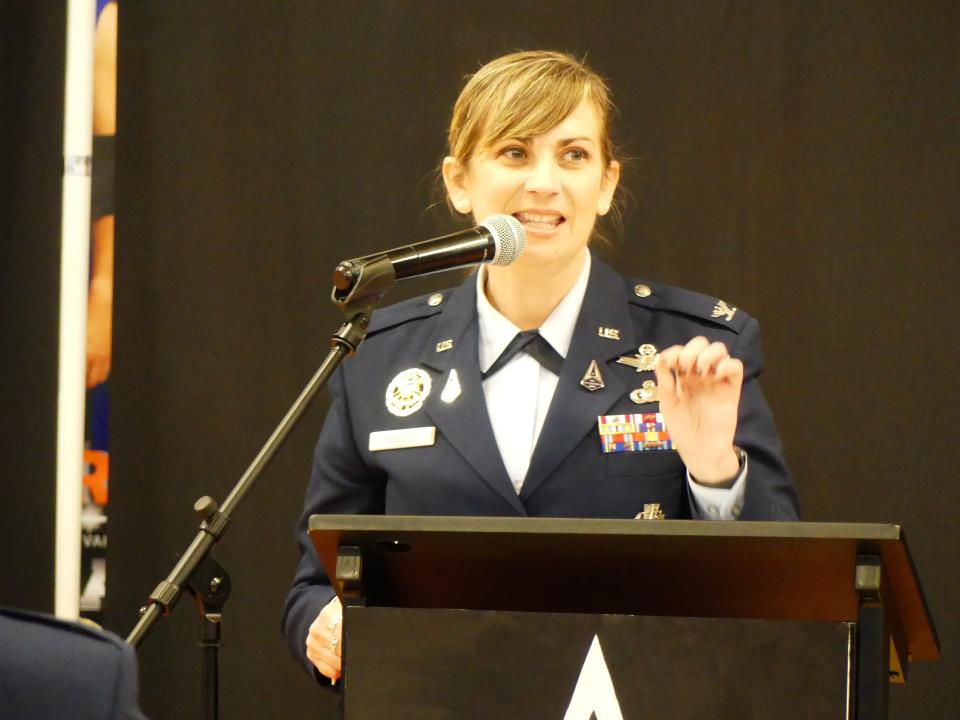
Space Force schools
The other schools that converted to produce the inaugural cohort of high school SFJROTC units include:
Arlington Career Center in Arlington, Virginia
Del Norte High School in Albuquerque, New Mexico
Durango High School in Las Vegas, Nevada
Falcon High School in Peyton, Colorado
Huntsville High School in Huntsville, Alabama
Klein High School in Spring, Texas
Shadow Mountain High School in Phoenix, Arizona
Space Coast Junior/Senior High School in Cocoa, Florida
Warren County High School in Warrenton, North Carolina
Space Force JROTC’s goal is to convert a total of up to 100 units over the next couple of years, according to Anthony “Todd” Taylor, chief of the program development division at Headquarters Air Force ROTC, according to Air Force Magazine.
About 1,200 JROTC cadets, or 1% of the entire AFJROTC program population, will be affected by the change.
“The sky’s the limit”
Andrade said he joined the JROTC after his father, Marine Corps veteran Carlos Gabriel Andrade Sr. died in Oct. 2019.
“I joined because I needed stability and the motivation to keep going,” Andrade told the Daily Press. “Since then, the program has pulled me out of the rubble, it connected me with new friends and it gave me a focus.”
Rochelle Arostegui said Carlos’ twin brother, Diego, also an ROTC cadet, has drawn inspiration and focus from the program.
As a Type 1 diabetic, Diego’s career options in the military are limited, according to his mother, who said the SFROTC opens additional military doors.
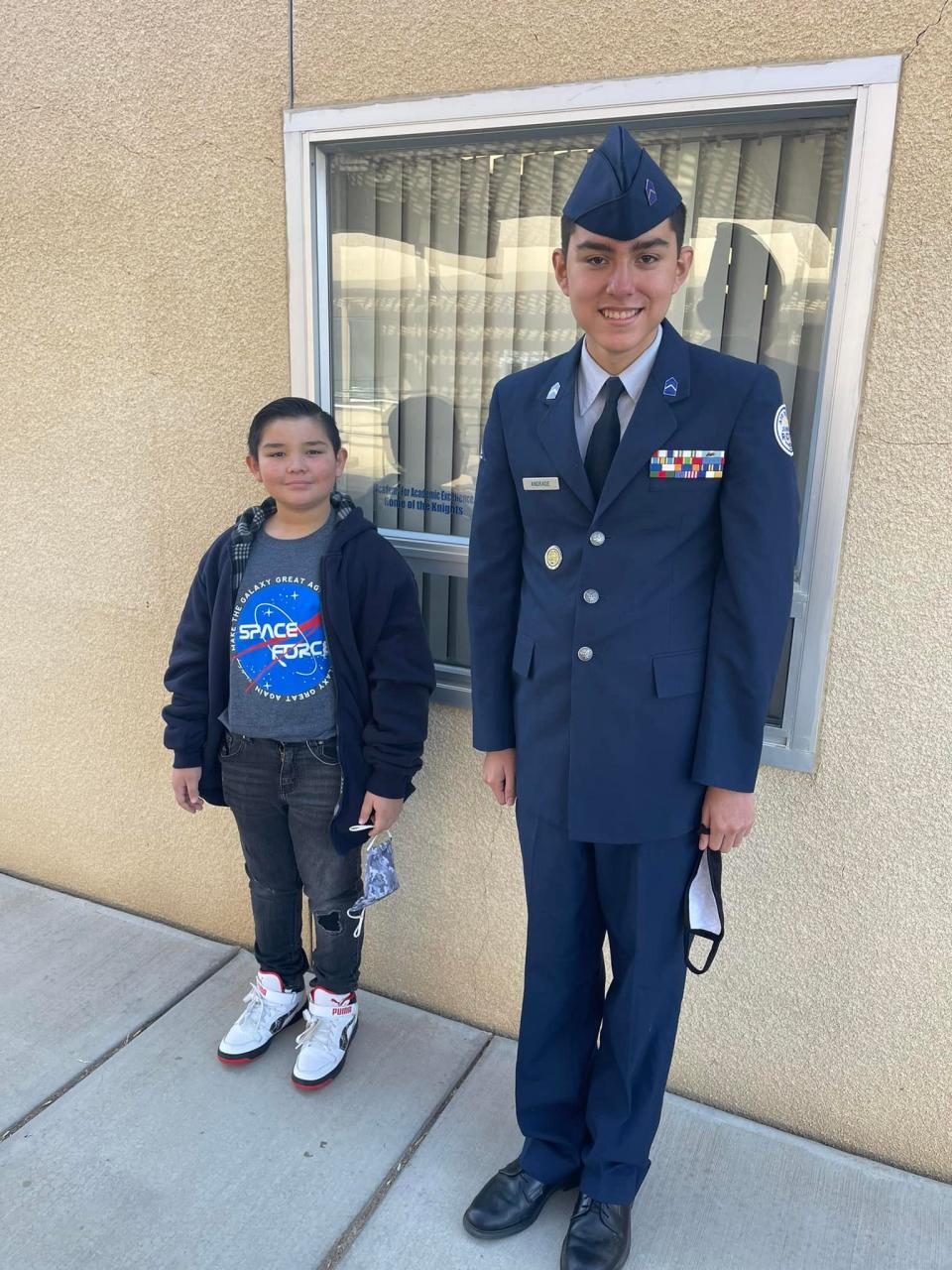
“Because of being Type 1, Diego can’t be an Air Force pilot,” his mother said. “But with Space Force, his feet can be on the ground, but the sky's the limit for career opportunities. Both my sons are over the moon excited.”
The American Diabetes Association’s legal advocacy director, Katie Hathaway, says it’s pretty much “a mixed bag” and military service is off-limits for most people with diabetes, especially those with Type 1.
“It’s hard to see a kid’s dreams dashed by a diagnosis of diabetes, and the military is one of the few jobs still off-limits to those with diabetes,” Hathaway said.
The Lewis Center operates two STEM-focused charter schools, including AAE, a TK-12th grade charter school, and Norton Science and Language Academy in San Bernardino, a TK-9th grade charter school.
The AAE mission is to prepare students for post-secondary success through a relevant, rigorous college-preparatory education.
Daily Press reporter Rene Ray De La Cruz may be reached at 760-951-6227 or RDeLaCruz@VVDailyPress.com. Follow him on Instagram @RenegadeReporter and Twitter @DP_ReneDeLaCruz
This article originally appeared on Victorville Daily Press: Space Force JROTC program comes to AAE in Apple Valley

